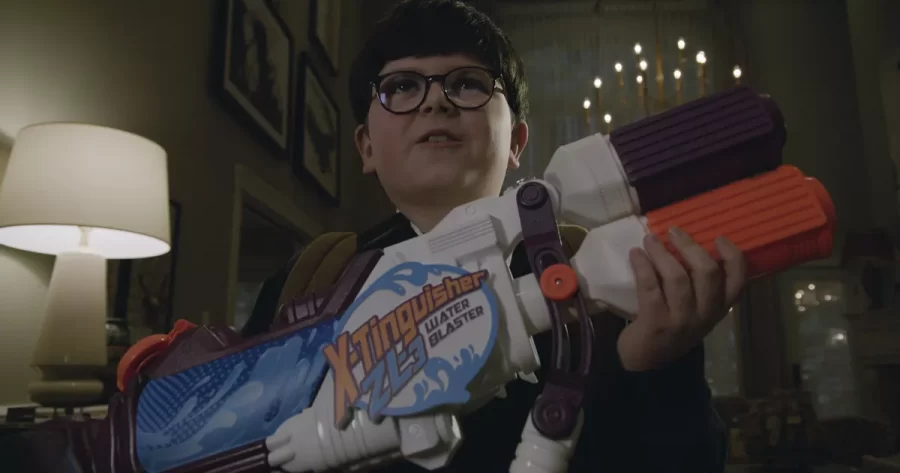‘Home Sweet Home Alone’: Better stick to the original
Max Mercer, a mischievous and spoiled kid, sets up elaborate booby traps to defend his house. “Home Sweet Home Alone” completely misses the feel-good spirit of the original “Home Alone,” leaving viewers confused and in no mood to enjoy the holidays.
As someone who pretty much memorized “Home Alone” in Christmas pajamas while sipping hot cocoa, I had high expectations for the Disney+ remake “Home Sweet Home Alone.” However, despite a few good one-liners and well-casted characters, “Home Sweet Home Alone” fails to meet the Christmas goal of leaving viewers in a feel-good mood; instead, the film delivers an unappealing plot and illogical ending with no sense of closure.
“Home Sweet Home Alone” follows the mischievous and spoiled Max Mercer, who is accidentally left home after his entire family goes to Tokyo without him. Like his predecessor Kevin McCallister, the original “Home Alone” protagonist, Max starts out enjoying his newfound freedom when he gets the whole house to himself. But upon overhearing a plan that his house will be broken into, he sets out to protect it.
Despite the initial similarities, I found myself uneasy for the majority of the movie, largely due to the major change in the storyline of the villains. The antagonists, Pam and Jeff McKenzie, are a kind-hearted couple with financial issues who mistakenly believe Max has stolen a priceless doll of theirs. As they attempt to get it back, Max sets up booby traps that severely injure the McKenzies. Admittedly, breaking and entering to solve financial problems is taking things a step too far, but hardly something that warrants getting burned or stabbed — especially when it is a generally good-natured but confused couple. The serious injuries endured by the antagonists in the original “Home Alone” seemed appropriate because they were portrayed as bumbling robbers with clearly malicious intentions. Here, it just feels uncomfortable, and it’s obvious the remake completely misses the holiday spirit and the feel-good aspect.
The type of protagonist in “Home Sweet Home Alone” also varied from the protagonist in “Home Alone,” with Max being portrayed in a more negative manner. Kevin captured the hearts of millions with his stubborn yet charming personality, whereas Max came off as rude and spiteful, and not in an endearing way — he even insults Jeff when they first meet by comparing him to Frankenstein, for no apparent reason. Because Max lacks the necessary charm that made Kevin likable, it was hard to sympathize with him or enjoy his elaborate booby traps, and I found myself sympathizing with the couple instead.
I was hoping that a heart-warming ending could make up for the ongoing character and plot flaws, but once again, I was left disappointed. Instead of including a happy ending to Max’s dysfunctional relationship with his family, the film gives us a lackluster ending with zero closure. In “Home Alone,” Kevin initially fought with his siblings often, and wished that they would all disappear. Throughout the film, he learned to be grateful for his family and he and his brother forgave each other for a previous argument. However, in “Home Sweet Home Alone,” we see that a year into the future, Max and his mother are now friends with Pam and Jeff — an absurd ending that makes no sense given everything the McKenzies endured at Max’s hands. There is also no sign that Max has mended his flawed relationship with his family, which arguably is the reason for him getting forgotten at home in the first place.
If you’re looking for a holiday classic to get you into the Christmas spirit, I’d say stick to the original.





